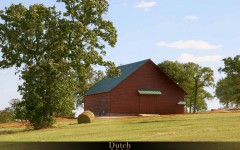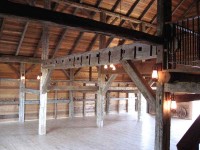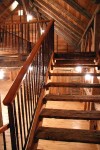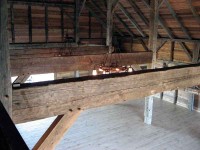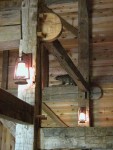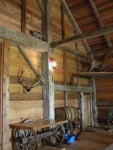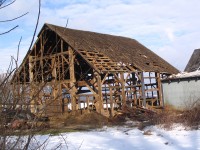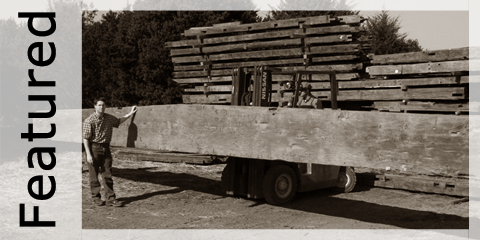Ripley Dutch Barn
Built circa 1760 in the Mohawk Valley of New York state, this barn is an excellent example of a New World Dutch Barn. The design of these unique barns originated in Holland in the 11th century and was later brought to the New World in the 1600’s by the Dutch settlers to New Netherland, which later became the colony of New York. It was here in America that they reached their grandest dimensions because, unlike in Europe, massive timbers were available from the virgin forests. New World Dutch barns are now considered the finest barns ever built. The Dutch farmers of the 1700’s practiced an agriculture in which, unlike modern monoculture that specializes in growing one crop, they raised a wide diversity of plants and livestock. These barns typically held milk cows, oxen, horses, sheep and chickens. In them the entire winter supply of grain - barley, wheat, rye, oats and corn - aside from large quantities of hay and straw, found safe storage.
The large, open central area of the barn is called the “nave,” from the Latin word for “ship.” You can see the reason for this if you look overhead at the roof interior, which resembles the ribs and planking of the inside of a wooden ship, thus the word “nave” from which we derive the word “navy.” Also looking overhead, you will notice that a short distance down from the top of the large, central vertical posts a hole has been bored in each post. These holes are now empty and serve no purpose in the function of the barn. They are known as the “raising holes,” but their true purpose is a mystery, lost over the centuries, though they are thought to have been used somehow to raise the barn.
The massive overhead beams with the rounded tenons on their ends are called “anchor beams.” These beams are unique to Dutch barns and are the largest beams found in any barns, often weighing over one ton each. This particular barn has witnessed much of American history, including the American Revolution in which over eight hundred homes and barns were burned in its vicinity in a British raid during October of 1780. It was also located less than a mile from the Erie Canal, built in 1825 as America’s first economical route to the West. Great technological achievement that it was, the canal also made economical the shipping of Midwestern wheat to the eastern seaboard and so made Dutch barns like this one obsolete. The last of these magnificent barns were built about 1830.
